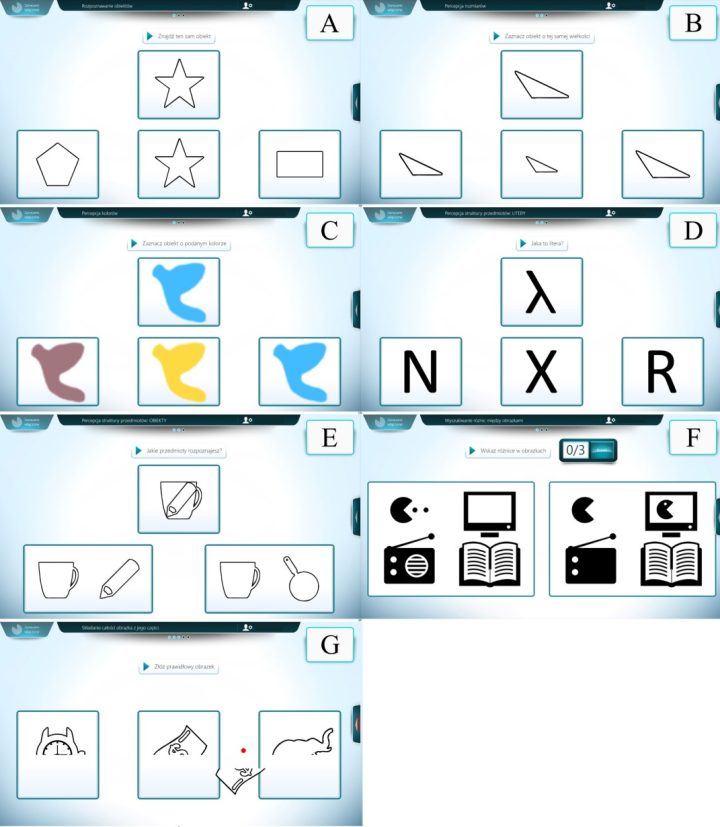Authors:Katarzyna Kujawa, Alina Żurek, Agata Gorączko, Roman Olejniczak and Grzegorz Zurek
Full article: https://www.mdpi.com/1660-4601/19/5/3081
An article devoted to the possibilities of using C-Eye to improve visuospatial functions in patients with impaired consciousness. For this purpose, oculomotor training was used, which lasted for 6 weeks, during which the patients performed tasks from particular categories of visuospatial functions once a week (figure below). The study was about checking whether such training is able to improve the time of active work of the patient with the eye tracker, and therefore whether it improves the efficiency of his control over eyeball movements.

Dig. 1. Examples of visuospatial function tasks.
A group of patients with impaired consciousness had great difficulty maintaining a state of arousal; active work with the device throughout the session was such a challenge for them that most of them were able to actively work with C-Eye for up to 30 minutes in total. Unable to express otherwise their reluctance to work with the eye tracker, patients at the beginning of the study often closed their eyes, looked beyond the screen or focused their eyes on something else that interested them personally.
The change that took place after the end of the 6-week oculomotor training was interesting:
1) the time of active work with the eye tracker has significantly increased,
2) patients were able to keep their eyes on the pictogram longer
3) they were characterized by greater precision in eye fixation (they looked at the pictogram, not beyond its borders),
4) they marked answers to questions faster and moved their eyes smoothly,
5) those patients who initially had problems with saccadic movements (looking at the other side of the screen) were able to look in a direction that was difficult for them after the training,
6) were able to perform a greater number of tasks that were given to them (they did best with the tasks in which they recognized colors, while the greatest changes in the results were observed in the case of the ability to recognize shapes and put pieces of an image together)

Dig. 2. A – object recognition, B – size perception, C – color perception, D – perception of letter-object structures, E – perception of object-object structures, F – finding differences between images, G – assembling image fragments into a complete picture
In conclusion, we can say that there was an improvement in almost all categories of visuospatial functions (with the exception of recognizing differences between pictures).
The results of the study show that systematic work with C-Eye extends the time of active interaction of the patient with the environment by improving the motor efficiency of the eyes, and also increases the level of selected cognitive functions.

